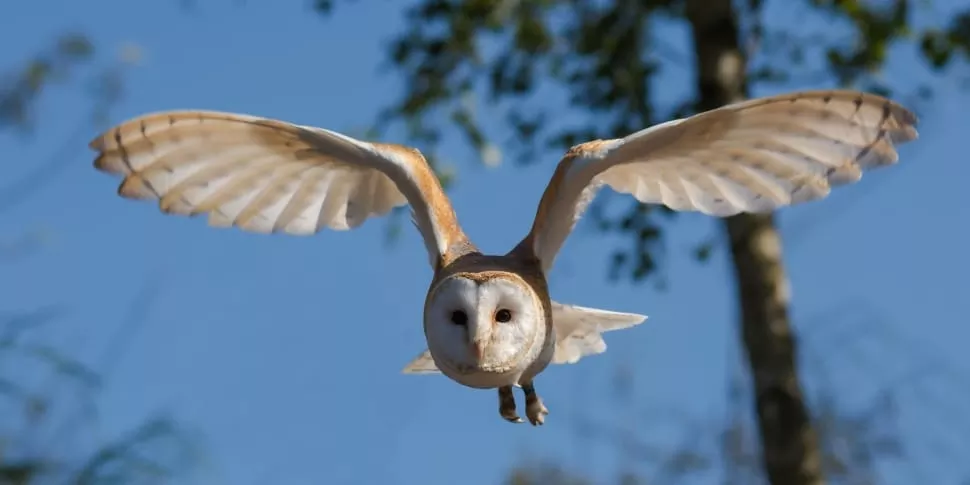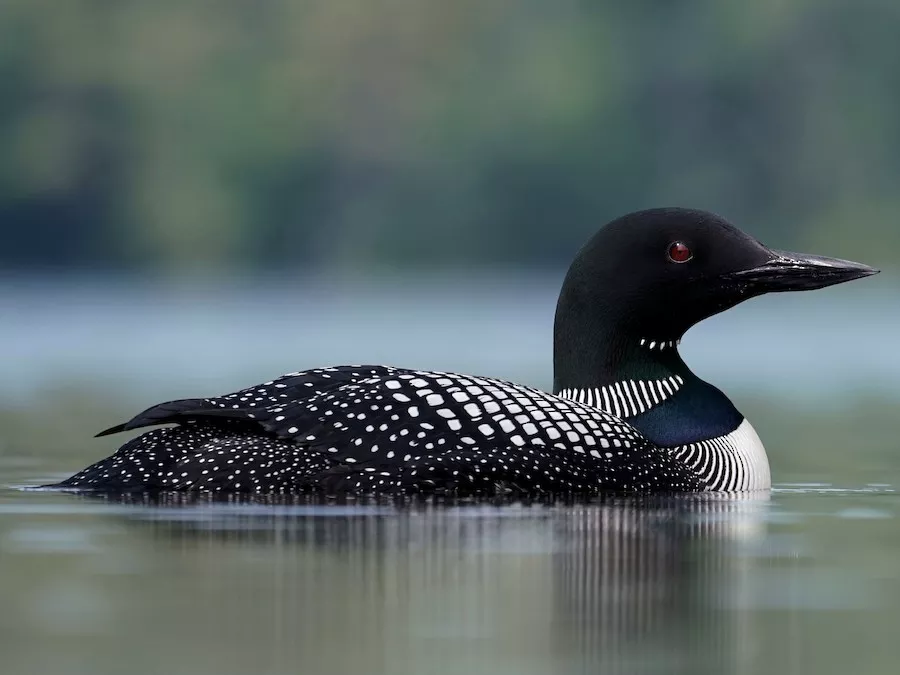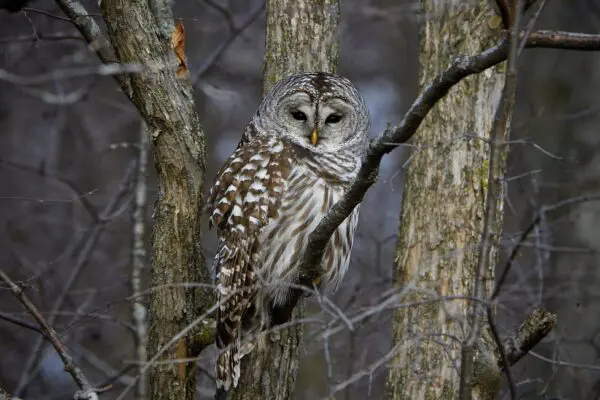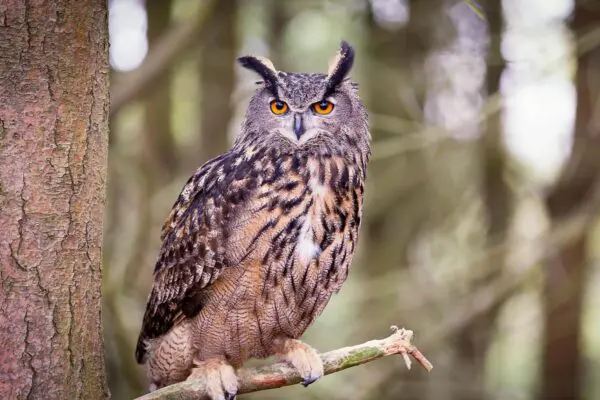The morning chorus and the lovely melodies that their favorite birds sing all day long are well-known to most birders. However, hearing many bird species sing at night might be unsettling. In reality, many bird species prefer to sing at night since there are fewer background sounds and fewer other birds to compete with their song. A terrific approach to improve your birding-by-ear abilities and take pleasure in a special part of avian communication is to learn to identify these nocturnal musicians. to understand what birds chirp or sing at night. first, we need to look into why birds chirp or sing at night.
Why do Birds Chirp or Sing at night?
The dawn chorus is the first indication that morning has arrived. Birds rise early and retire at dark. Most birds start to hunker down for the night as twilight falls. You shouldn’t hear them again until morning after it has been dark. But there can be several reasons for why birds chirp at night
Birds get Confused:
Sometimes birds will chirp at night just because they are puzzled. Streetlights and other sources of light pollution can interfere with birds’ ability to sleep as towns and cities continue to grow. Some birds, like robins and thrushes, are susceptible to being duped into believing it to be dusk when it is actually the middle of the night. They won’t stop singing and staying active as a result, even when they need to be sleeping.
Birds Feel Danger:
Birds respond to danger the same way humans do. They may be awakened and begin to sing in fear if they perceive any kind of threat at all, such as the nest shaking or an extremely loud noise. If one bird starts singing, others will soon join in, just like the morning chorus.
Nocturnal birds
Of fact, a lot of birds are active at night, and it’s most likely one of these that is chirping when you hear it. Here are just a handful of the nocturnal birds that may be heard at night around the nation.
So, what birds chirp or sing at night?
Below is the list of birds that Chirp or Sing at night
Northern Mockingbird (Medium Grey Birds)

- Scientific name: Mimus polyglottos
- Lifespan: about 8 to 10 years
- Wingspan: 12 to 14 inches
- Native to the United States and in Canada and Mexico
In the wild, omnivores like northern mockingbirds will consume just about everything. It is thought that mealworms, berries, nuts, and small animals like lizards make up their diet.
The full moon and sometimes the melodies of other birds may cause the males to sing more than 200 distinct songs over their lifetimes. They often transition to brand-new songs to display their excellent vocalization. Their songs are varied in duration, notes, and tones. Sadly, human hunters sometimes target northern mockingbirds because of their astounding capacity to sing a wide variety of melodies. Their population has been falling by 20% over the last fifty years, and there is currently no evidence that it will stop.
Eastern Whip-poor-will:

- Scientific name: Antrostomus vociferus
- Lifespan: Typically 4-6 years
- Size: Medium-sized; around 9-10 inches (23-25 cm) in length, wingspan of 16-18 inches (41-46 cm)
- Origin: Native to eastern North America, often found in deciduous forests and open woodlands.
Due to its extremely concealing plumage, this member of the nightjar family is considerably easier to hear than to see. These nocturnal birds often roost in silence during the day because of their nocturnal nature, but at night they speak out with a chanting song. At any time of night, the distinctive sounds that exactly match the bird’s name may be heard repeated in a continuous, even sequence for many minutes.
Also Read: Birds that Chirp at night in Florida
Hermit Thrush: (birds whistling at night)
 The Hermit Thrush, a stunning reddish-brown bird with a recognizable plump body, is another North American songster that often chirps at dusk. From spring until autumn each year, you’ll probably get to hear this bird’s melodious whistling and singing.
The Hermit Thrush, a stunning reddish-brown bird with a recognizable plump body, is another North American songster that often chirps at dusk. From spring until autumn each year, you’ll probably get to hear this bird’s melodious whistling and singing.
Each of their songs is a series of pleasing expressions played at various pitches that, since they are identical to flute sounds, elicit delight. The Hermit Thrush, like American Robins, is one of the last birds to chirp at midnight and one of the first to perform early in the morning from a wide and open perching.
Hermit Thrush will mostly graze on dry ground, such as leaf and branch litter, as opposed to searching for food while gliding through the air like other species. They will bounce about for some time while digging and grabbing food with their beaks. Their varied food includes seeds, berries, and minute insects including grasshoppers, crickets, beetles, ants, and worms. Typically, the females feed the hatchlings these items while the males gather them.
In addition to singing being a natural component of their ecosystem, singing is a tactic they use to mark their territory, which is often well-hidden and situated in grounded sites like sports courts, graveyards, and fields.
American Robin

- Scientific name: Turdus migratorius
- Lifespan: 2 years
- Size: 8-11 inches
- Native to: Connecticut, Michigan, and Wisconsin
Due to their great sensitivity to both natural and artificial light, American robins seldom remain active throughout the day. Insectivores, such as robins, are quite good at modifying their behavior to hunt for food in dimly lit environments. They cannot get used to loud noises outside of lights. Therefore, quiet evenings provide the perfect environment, when they may often be observed and heard singing.
A robin is often the first bird to start chirping as soon as the sun comes up in the morning and the last to stop late at night. Their music is described as having upbeat tunes with a springtime feel, and sometimes even being really scary.
Robins normally sing throughout the year, thus there is no one time when it is measured that they sing the most. Additionally, the chirping of other nocturnal animals as well as a variety of natural occurrences, such as flashing lights, loud noises from nest shaking, or even fireworks and thunder, may cause robins to sing.
These nightingales are the most common midnight birds in gardens and communities since they can sing at any time of the year and are easily startled by anything.
Black-crowned Night Heron

Image Source
- Scientific name: Nycticorax nycticorax
- Lifespan: Up to 20 years
- Size: 58-65 centimeters (23-26 inches)
- Weight: 550-800 grams (1.2-1.8 pounds)
- Origin: Worldwide distribution, found near bodies of water
Although these birds don’t have a melodious song, people often hear their harsh, croaking sounds throughout the night. This may give the marshes, swamps, and wetlands an unsettling air. Many birders are acquainted with these birds’ cries and the calls of other night-heron species since they may be found all over the globe, especially in North and South America, Europe, Africa, and Asia.
Common Nightingale: (What birds chirp or sing at night)
 The common nightingale, one of the most abundant songbirds in Europe, Asia, and Africa, may seem unassuming at first, but its singing is anything from average. This bird may sing all of its more than 200 melodies at once in the dead of night. The common nightingale is a timid bird that often hides in tall vegetation. Despite this, the bird’s rich, flute-like voice and a variety of songs may be heard for long distances and continuously because it never gets bored singing.
The common nightingale, one of the most abundant songbirds in Europe, Asia, and Africa, may seem unassuming at first, but its singing is anything from average. This bird may sing all of its more than 200 melodies at once in the dead of night. The common nightingale is a timid bird that often hides in tall vegetation. Despite this, the bird’s rich, flute-like voice and a variety of songs may be heard for long distances and continuously because it never gets bored singing.
Yellow-breasted Chat

- Scientific name: Icteria virens
- Lifespan: Typically 5-10 years
- Size: Medium-sized; about 5.5-7.5 inches (14-19 cm) in length, wingspan of 7.5-9.5 inches (19-24 cm)
- Origin: Native to North America, found in thickets and shrubby habitats.
Although this huge, warbler-like bird has a striking yellow breast and neck, it likes to remain camouflaged among vegetation. However, when it feels like singing, it will periodically go to a more exposed area and dazzle viewers with warbling chirps, whistling chatters, and a few scratchy notes all braided into a loud and audible melody. Although these birds only generally sing in the spring, you may often hear them at night.
European Robin:

The European robin is a little songbird with a loud voice that often sings all year long to protect its territory. Bright urban or suburban lights might cause this bird to scream all night long. Happily, the high, lilting voice and sporadic whistling tones combine to create a lovely song that many birders like at any time. The European robin often sings in the early morning and late at night when not fooled by artificial lights.
Killdeer

Image Source
- Scientific name: Charadrius vociferus
- Lifespan: Up to 10 years
- Size: Approximately 23-28 cm (9-11 inches)
- Native to: North and Central America
- Beak length: Around 3-4 cm (1.2-1.6 inches)
Even at night, the piercing cry of this well-known shorebird might seem a frenetic, chattering song. No matter what time of day it is, these birds often call while flying, and during their migration in late autumn and early spring, they may sing all night long. However, in order to hear killdeers, birders must listen for them in their natural habitat, which is near shallow water or wide, arid areas that are perfect for breeding and feeding.
Black Rail:
 The black rail is an elusive swamp bird with a peculiar song-like cry that is found in remote areas of South America, the Caribbean, and scattered areas of the southern United States, including coastal Texas. The ki-ki-kooo cry has a deep, pipe-like tone and may be heard repeatedly throughout the night. These birds are cautious and alone, so hearing their unusual song is often much simpler than finding them at night because of their black plumage.
The black rail is an elusive swamp bird with a peculiar song-like cry that is found in remote areas of South America, the Caribbean, and scattered areas of the southern United States, including coastal Texas. The ki-ki-kooo cry has a deep, pipe-like tone and may be heard repeatedly throughout the night. These birds are cautious and alone, so hearing their unusual song is often much simpler than finding them at night because of their black plumage.
Barred Owl

- Scientific name: Strix varia
- Lifespan: Around 10-15 years
- Size: Medium to large owl; approximately 16-24 inches (41-61 cm) in length, wingspan of 38-49 inches (97-125 cm)
- Origin: Native to North America, commonly found in forests, swamps, and wooded areas.
The barred owl has a melancholic hooting sound with lengthier notes at the end that may be heard across the eastern United States, western Canada, and the Pacific Northwest. Owls are active at night, which is not surprising, and they are especially vocal during this time of year. During the breeding and wooing seasons, these huge owls often sing in pairs or as solos. Throughout the night, a couple of owls may call one another continuously, while lone birds may sing for hours after sunset.
Barn Owl

Image Source
- Scientific name: Tyto alba
- Life span: up to 20 years in captivity
- Size: length of 12-16 inches, wingspan of 39-49 inches
- Weight: 0.5-1.4 lbs
- Origin: worldwide distribution
With the exception of Antarctica, every continent is home to the barn owl, one of the most common owl species. The continuous, harsh, rasping shriek of this bird may be heard at any time of night when it’s active. Additionally, they make a clicking, kleaking chatter and quieter pleading cries that young birds use to get their parent’s attention. All these strange noises may be heard throughout the night by birders who install barn owl cages.
Common Loon:

- Scientific name: Gavia immer
- Lifespan: Up to 20 years
- Size: 58-76 centimeters (23-30 inches)
- Weight: 1.4-3.2 kilograms (3-7 pounds)
- Origin: North America (breeding in arctic regions)
The common loon sounds more like a somber piece of music, which has seemingly become their emblem, whereas other magpies chirp happily with those high notes. We can see and hear such noises plainly after the darkness has completely enveloped the sky. Typically, they may produce these trembling, cackling melodies and continue howling like wolves, all of which combined to provide a melancholy and somewhat eerie atmosphere.
Common loons eat mostly fish, leeches, shrimp, and particularly lobster in the winter. As a result, they spend most of their time swimming in lakes, ponds, swamps, and rivers. Although they are excellent swimmers, they may tumble easily when on land. A common loon is a socially awkward species of bird that chirps at night and seldom ever forages or flies in groups.
Final Thoughts on what birds chirp or sing at night:
Birds chirp at night not only because it is their natural urge to do so, but also because it provides a tranquil environment in which they may exhibit their greatest nocturnal vocalization.
Additionally, because they can depend on the moon and stars for navigation, birds migrate best at night. Even while all nocturnal birds sing lovely tunes and are active at night, each of these species has unique physical characteristics, personalities, and other ingrained activities like feeding, constructing nests, and making flight calls.
You may greatly improve your birding-by-ear abilities and take full advantage of the exciting natural moments by making an effort to distinguish between these intriguing wild songsters.
How many of the nightjar species have you heard of?
List of Birds That Sing at Night
- Northern Mockingbird
- Eastern Whip-poor-will
- Hermit Thrush
- American Robin
- Black-crowned Night Heron
- Common Nightingale
- Yellow-breasted Chat
- European Robin
- Killdeer
- Black Rail
- Barred Owl
- Barn Owl
- Common Loon






One thought on “What birds chirp or sing at night? [Best night singer birds list]”